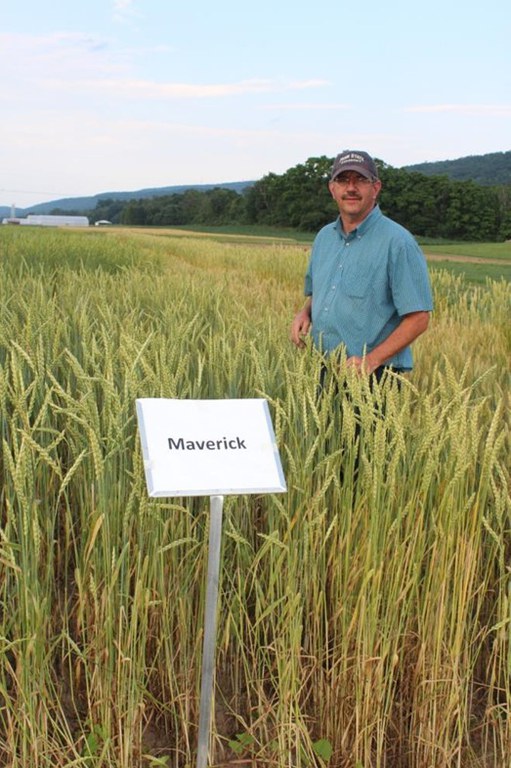This project is designed to evaluate alternative value-added small grains that have potential markets in our region. These include hertitage and modern wheat varieties and ancient grains such as emmer, spelt and einkorn.
There is an increasing demand for local organic ancient grains in our region. We conducted evaluation trials for each of these in conjunction with colleagues in NY and ND to examine the agronomic characteristics and yield potential of each. In subsequent studies, our colleagues in the research project conducted taste and quality evaluations. These data are summarized from the official project report located at the Cornell Small Grains Cultivar Testing website.
Heritage wheat varieties are older varieties that have been grown in past that are experiencing a resurgence in interest. Alternative wheat varieties are those that are a different class than the soft red winter wheat in the region. These could include hard red winter wheat, hard white winter wheat, or hard red spring wheat.
Spelt is a hulled wheat that is a hexaploid, just like modern wheat. It is grown for animal feed in our region but can be dehulled and ground into white and whole wheat flour for baking.
Emmer is an ancient two rowed hulled wheat that is also known as farro in Europe. Unlike modern wheat, emmer is a tetraploid and contains 28 chromosomes instead of 42. Emmer is a high protein wheat and is used for pasta, bread, pilafs and flatbreads.
Einkorn is one of the oldest ancestors of wheat. Cultivation dates back to 8000BC. It is a diploid, with 14 chromosomes, compared to 42 in modern wheat. The grain has higher protein than modern wheat and is considered more nutritious. There some evidence that einkorn contains a less toxic form of the gliadin protein, which may reduce the toxicity to consumers with gluten sensitivities.
These are two educational videos describing our winter wheat and heritage grain evaluations and provide some insights on varieties and management of these crops.
This is a listing of our other project collaborators and sources of more information on hertitage, alternative and ancient grains.


